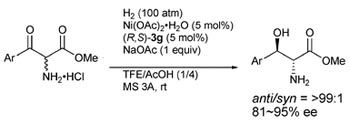Molecular Hand
DNA-based molecular machine that reversibly grabs and then releases thrombin
Advertisement
Nanorobots and molecular machines are no longer just a matter for the imaginations of science fiction writers; they have become a realistic goal of serious research. Researchers in Munich have now succeeded in constructing a type of "molecular hand," which can, upon application of an external signal, grab a molecule of the human blood-clotting factor a-thrombin and then release it again.
DNA is a material particularly well suited for the construction of molecular machine parts. A number of nanomechanistic structures based on DNA have already been developed; these have been able to perform different stretching and turning motions. To date, none have carried out a special function of any kind. In contrast, the new DNA "hand" from the team headed by Friedrich C. Simmel can actually make a grab. The Munich researchers' DNA "hand" is based on a DNA variant with functionality, an aptamer. Aptamers are short segments of single-strand DNA that are fished with precision from a random pool of countless different DNA sequences. The basis of selection is the particularly strong tendency of the aptamer to bind a specific protein or small molecule.
Simmel and his co-workers chose an aptamer that binds the human blood-clotting factor a-thrombin. The aptamer is made of fifteen bases, which, in the presence of potassium ions, arrange themselves into a structure with a cubelike region. In this conformation, the "hand" "grabs" thrombin and holds on to it. To control the "hand", the scientists added on a "switch", a shorter DNA strand. This is how it works: the "hand-opener" is yet another DNA strand that is complementary, meaning it is an exact counterpart to the switch and to part of the "hand". When this segment is added to the solution, it binds to its counterpart and destroys the cube conformation-the "hand" lets go of the thrombin molecule. However, the "hand-opener" has yet another piece of DNA, which has remained unpaired. A second DNA control strand can attack this segment. It binds to the "hand-opener" and separates it from the "hand" and the switch. The "hand" is then free to fold back into a cube and bind the thrombin once more.
"Our molecular machine can bind and release thrombin many times," says Simmel. "It thus fulfils the task of precisely controlling the thrombin concentration in the solution between lower and higher levels." It should be possible to build further nanomachines, based on the same principle.
Most read news
Organizations
Other news from the department science

Get the chemical industry in your inbox
By submitting this form you agree that LUMITOS AG will send you the newsletter(s) selected above by email. Your data will not be passed on to third parties. Your data will be stored and processed in accordance with our data protection regulations. LUMITOS may contact you by email for the purpose of advertising or market and opinion surveys. You can revoke your consent at any time without giving reasons to LUMITOS AG, Ernst-Augustin-Str. 2, 12489 Berlin, Germany or by e-mail at revoke@lumitos.com with effect for the future. In addition, each email contains a link to unsubscribe from the corresponding newsletter.


























































